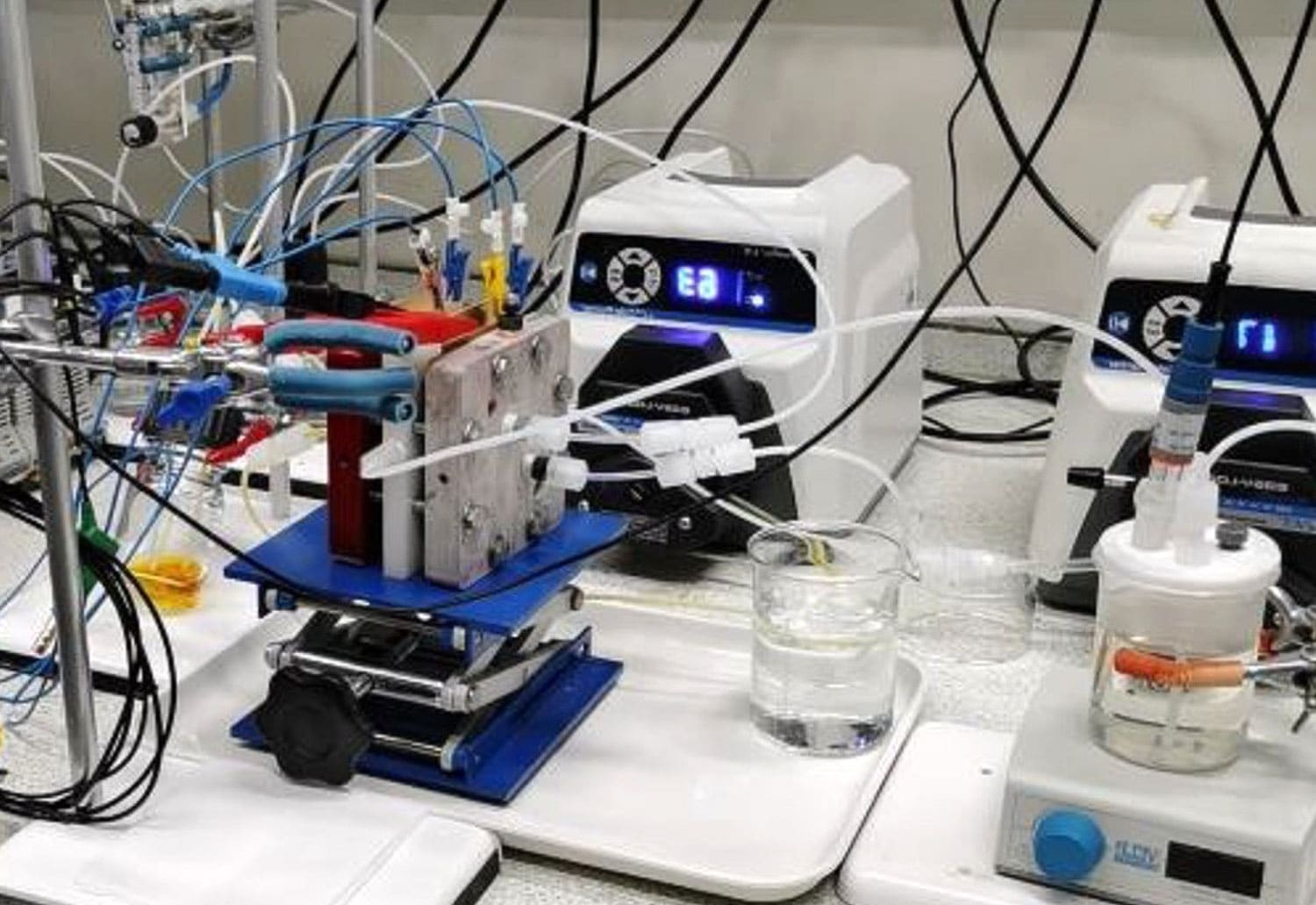
The rapid application of renewable energy such as solar and wind electrical power has increased the demand for grid-scale long-duration energy storage solutions. In this regard, redox flow batteries (RFB) demonstrated great prospects for medium- to large-scale electrical power storage applications. However , the actual cost of the RFBs remained too high for widespread professional adoption.
In accordance with Imperial College London study workers, a new battery design strategy could provide the key to cheap, long-term energy storage . The team of engineers has developed some polysulfide-air redox flow wide array (PSA RFB) with 2 membranes. The dual tissue layer design overcomes the main problems with this type of large-scale battery, opening its potential to store excess energy from renewable methods for a long period of time.
The Imperial team searched an alternative to the electrolyte used for conventional redox flow electric battery – vanadium – which can be expensive and primarily found from either China or Russia. In their approach, doctors used a liquid as you electrolyte and gasoline as the other – in such cases, polysulfide (sulfur dissolved within an alkaline solution) and environment. However , the performance with polysulfide-air batteries is limited due to the fact no membrane could entirely enable the chemical reactions to take place while still preventing polysulfide from crossing over into the other part of the cell.
“If the particular polysulfide crosses over in to the air side, then you suffer a loss of material from one side, which unfortunately reduces the reaction taking place there and inhibits the activity with the catalyst on the other, ” explained Dr . Mengzheng Ouyang from Imperial’s Division of Earth Science plus Engineering. “This reduces the performance of one’s battery – so it was obviously a problem we needed to resolve. ”
Researchers developed an alternative plan that uses two filters to separate the polysulfide along with the air, with a solution regarding sodium hydroxide between them. The materials, including the membranes, are usually relatively cheap and acquireable. In addition , the design provides way more choice in the materials you can use.
In the experiments, researchers found that the new polysulfide-air redox flow battery was able to offer significantly more power, up to a few. 8 milliwatts per centimeter squared. They calculated the vitality cost – the price of often the storage materials in relation to how much energy stored – to be around $2. 5 in every kilowatt-hour. The power cost – the rate of charge and additionally discharge achieved in relation to the buying price of the membranes and catalysts in the cell – had been found to be around $1600 per kilowatt. Though this is often too high for large-scale energy memory space , the team believes additional improvements are readily feasible.
“To make this cost-effective for large-scale storage, a relatively modest enhancement in performance would be demanded, which could be achieved by changes to the catalyst to increase their activity or by further more improvements in the membranes employed, ” claimed Professor Nigel Brandon, who is also Dean of the Faculty of Architectural.
Brand-new battery design provides cheap, long-term energy storage
Source: Tambay News






0 Comments